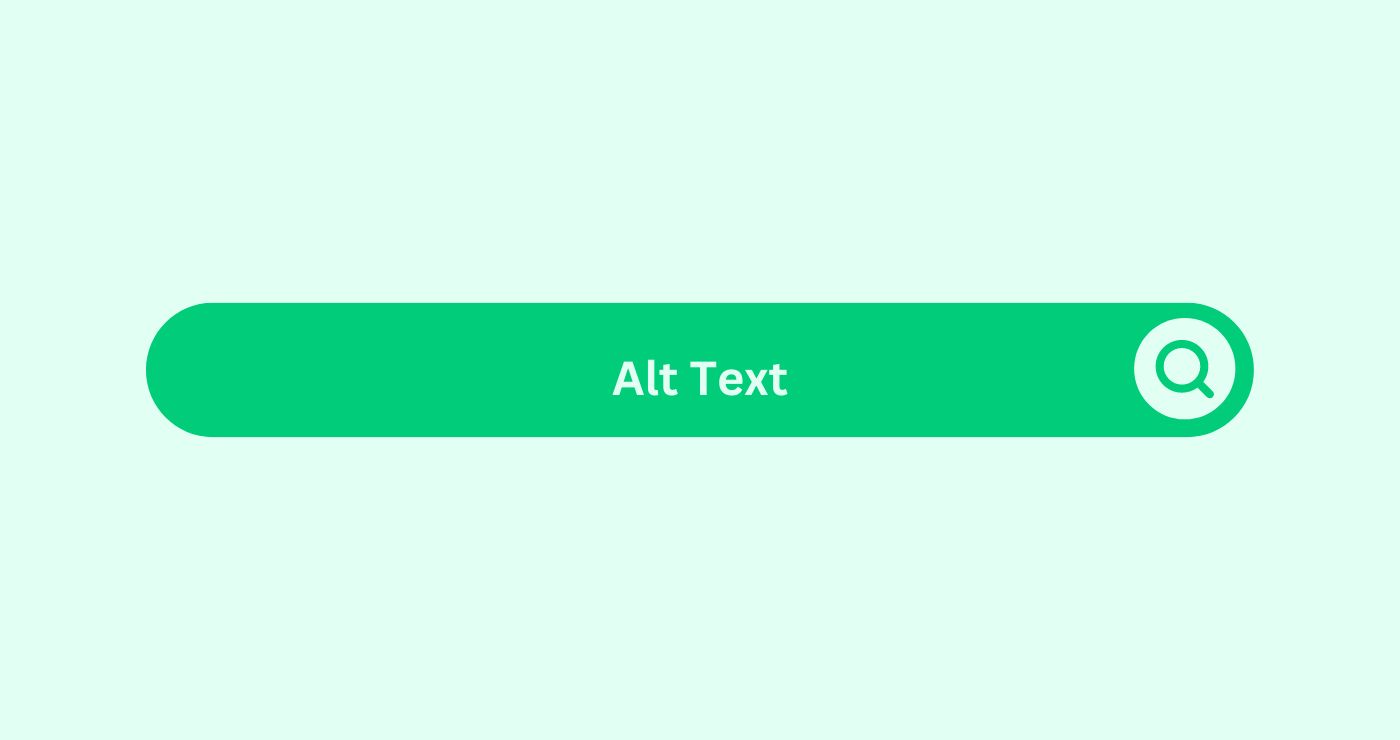What is the alt text in the context of SEO?
Alt text, short for alternative text, is a descriptive attribute added to HTML code to provide textual descriptions of images. In the realm of SEO, alt text plays a crucial role in enhancing accessibilityDefinition Accessibility refers to the design and developmen... More and improving image search visibility by providing context to search engines.
Definition
The alt text is a textual description added to HTML code that serves as an alternative representation of images for users who are visually impaired or unable to view images. In the context of SEO, alt text helps search engines understand the content and context of images, contributing to improved indexingWhat is Indexing? Indexing in the context of SEO refers to t... More and ranking in image search results.
Example of how you can use Alt Text
An example of utilising alt text in SEO is adding descriptive and relevant alt attributes to images on a website. For instance, if an image depicts a red apple, the alt text could be “Red apple on wooden table,” providing both visually impaired users and search engines with a clear understanding of the image content.
Key Takeaways
- AccessibilityDefinition Accessibility refers to the design and developmen... More: Alt text enhances website accessibilityDefinition Accessibility refers to the design and developmen... More by providing textual descriptions of images for users who rely on screen readers or have visual impairments.
- SEO Benefit: Descriptive alt text improves image search visibility by helping search engines understand the content and context of images.
- Keyword RelevanceDefinition In SEO, relevance refers to the degree to which a... More: Incorporating relevant keywordsWhat is the keyword in the context of content marketing? Key... More into alt text can further optimise images for targeted search queries, boosting overall SEO performance.
- Conciseness: Alt text should be concise and descriptive, conveying the essence of the image in a few words without being overly verbose.
- Accuracy: Alt text should accurately describe the content and context of the image, avoiding misleading or irrelevant descriptions.
FAQs
Is alt text necessary for all images on a website?
Alt text is recommended for all images, especially those that convey important information or serve as links.
What happens if I don't include alt text for images?
Without alt text, visually impaired users and search engines may struggle to understand the content and context of images, potentially impacting accessibilityDefinition Accessibility refers to the design and developmen... More and SEO.
How long should alt text be?
Alt text should be concise yet descriptive, ideally between 5 and 15 words, providing enough context without being too lengthy.
Can I use alt text to stuff keywords for SEO purposes?
While it's important to incorporate relevant keywordsWhat is the keyword in the context of content marketing? Key... More into alt text, avoid keyword stuffingWhat is Keyword Stuffing? Keyword stuffing refers to overloa... More, as it may be considered spammy and could harm SEO efforts.
Should alt text describe decorative or spacer images?
For decorative or spacer images that serve no informational purpose, use empty alt attributes (alt="") to indicate that they are purely decorative and should be ignored by screen readers.
How often should alt text be updated?
Alt text should be updated whenever the content or context of an image changes, ensuring its accuracy and relevanceDefinition In SEO, relevance refers to the degree to which a... More over time.
Are there any SEO best practices for writing alt text?
Write alt text that accurately describes the image, includes relevant keywordsWhat is the keyword in the context of content marketing? Key... More, and provides context for both users and search engines.
Can I include URLs or promotional content in alt text?
No, alt text should focus on describing the content of the image and should not include URLs, promotional language, or unrelated text.
Does alt text impact page load speed?
Alt text itself does not impact page load speed, but excessive or unnecessarily long alt text can contribute to bloated HTML size, potentially affecting load times.




